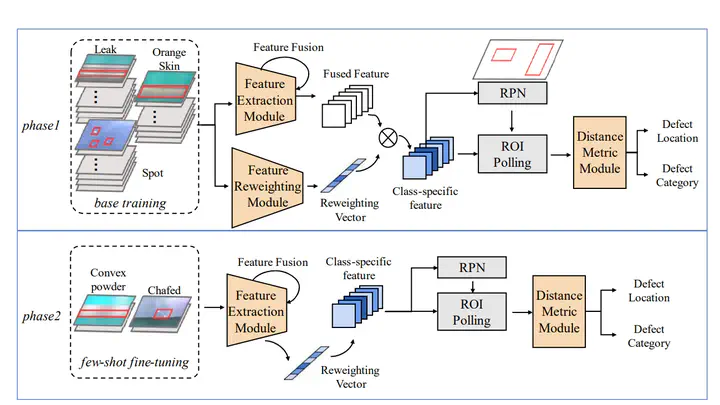
Abstract
Surface defect detection plays an increasingly important role in manufacturing industry to guarantee the product quality. Many deep learning methods have been widely used in surface defect detection tasks, and have been proven to perform well in defects classification and location. However, deep learning-based detection methods often require plenty of data for training, which fail to apply to the real industrial scenarios since the distribution of defect categories is often imbalanced. In other words, common defect classes have many samples but rare defect classes have extremely few samples, and it is difficult for these methods to well detect rare defect classes. To solve the imbalanced distribution problem, in this paper we propose TL-SDD:a novel Transfer Learning-based method for Surface Defect Detection. First, we adopt a two-phase training scheme to transfer the knowledge from common defect classes to rare defect classes. Second, we propose a novel Metric-based Surface Defect Detection (M-SDD) model. We design three modules for this model:(1) feature extraction module:containing feature fusion which combines high-level semantic information with low-level structural information. (2) feature reweighting module:transforming examples to a reweighting vector that indicates the importance of features. (3) distance metric module:learning a metric space in which defects are classified by computing distances to representations of each category. Finally, we validate the performance of our proposed method on a real dataset including surface defects of aluminum profiles. Compared to the baseline methods, the performance of our proposed method has improved by up to 11.98% for rare defect classes.